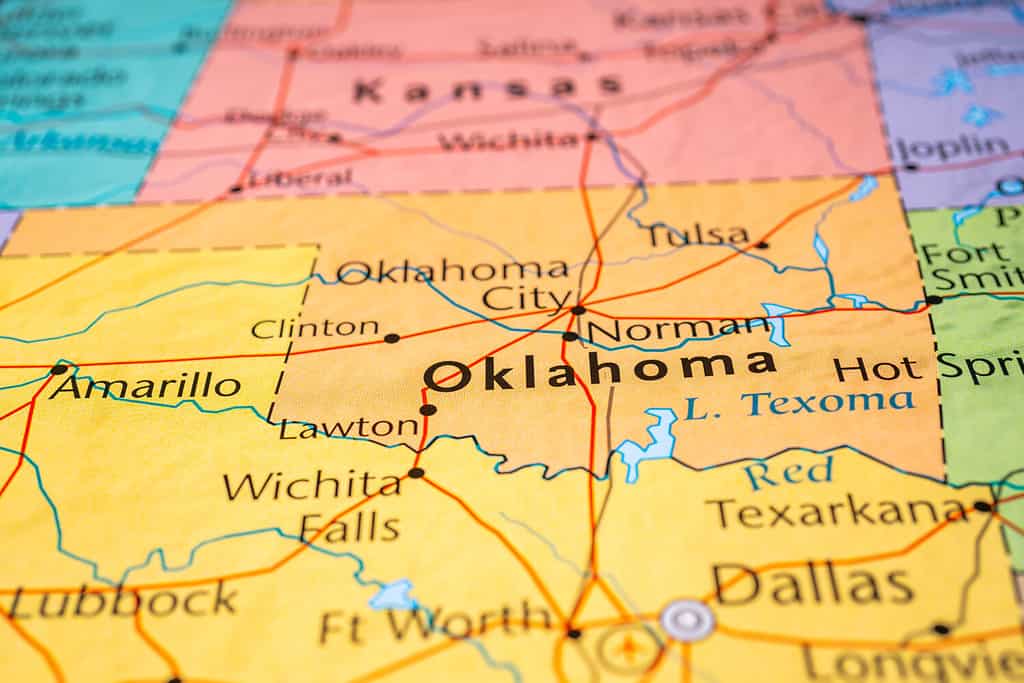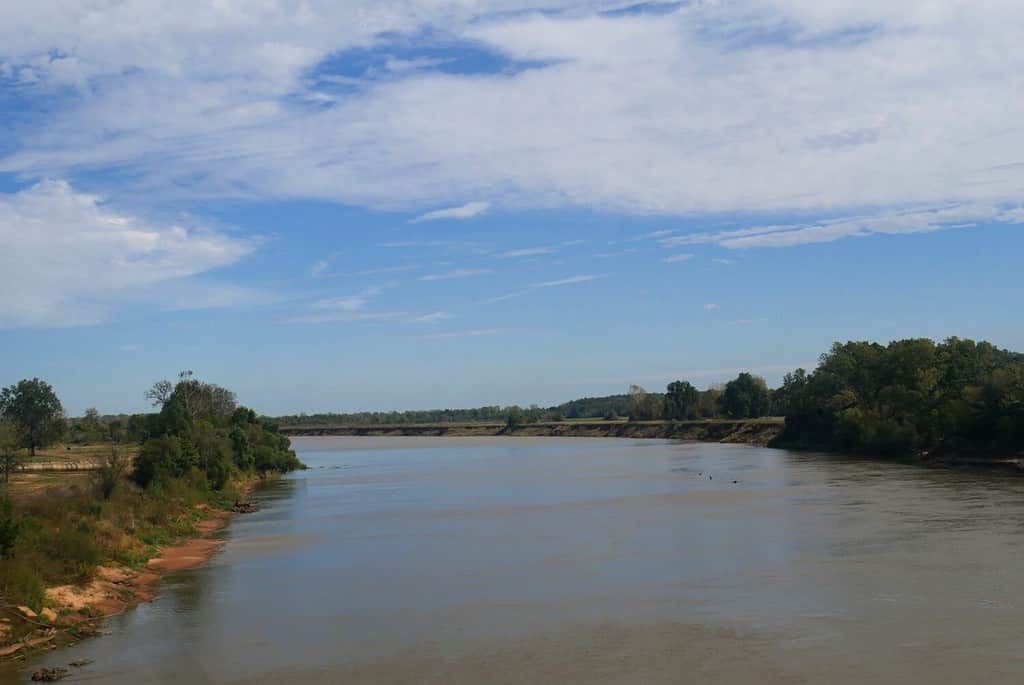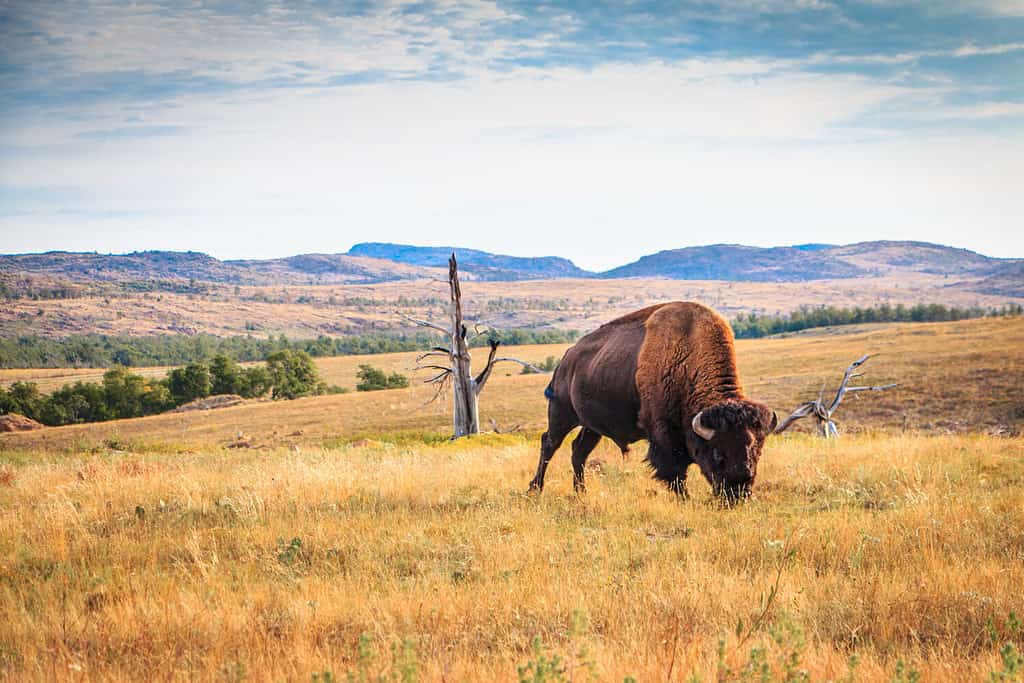Oklahoma, while not as large as some of its neighbors in the South Central U.S., is still the 20th largest state in the U.S. How wide is Oklahoma? With its distinctive panhandle shape extending many miles to the west, Oklahoma is 465 miles wide, from its eastern border with Missouri and Arkansas to its western border along New Mexico.

How wide is Oklahoma?
©Alexander Lukatskiy/Shutterstock.com
Oklahoma’s Journey to Statehood
Home to indigenous peoples until European colonization, Oklahoma was claimed by the French in the early 18th century. It held that claim until 1803 when the United States acquired the territory in the Louisiana Purchase. It was considered part of the Arkansas Territory for a time, ending in 1828.
During the 19th century, the U.S. systematically removed Native Americans from their lands throughout North America and forcibly transplanted these nations in and around present-day Oklahoma. Eventually, white settlers began to move through and settle in these lands to take cattle on a more direct route from Texas to Kansas and to appropriate land for other purposes.
The U.S. divided these lands into allotments for farming and private ownership through the Dawes Act in 1887. In 1889, a government-authorized land rush resulted in white settlers taking lands from many Native American peoples within Oklahoma. Some settlers jumped the gun and were known as “Sooners,” which became the official state nickname.
After a failed attempt by the Native American peoples of Oklahoma to create a Native American state called “Sequoyah,” another statehood convention was formed. In 1907, President Theodore Roosevelt issued a presidential proclamation declaring Oklahoma the 46th state.
Geography
Oklahoma is a South Central state with territory in the Great Plains, a region known as “Cross Timbers,” and the U.S. Interior Highlands. It is bordered to the east by Missouri and Arkansas, to the south by Texas, to the north by Kansas and Colorado, and the west by Texas and New Mexico. Its southern border with Texas is the Red River.
The Great Plains make up the majority of the state. This wide-open, elevated grassland is prone to severe weather. Summers are dangerously hot, and the winters are bitterly cold. The combination of terrain, temperature extremes, warm, moist air from the Gulf of Mexico, and cold, dry air from the Rocky Mountains and Canada creates favorable conditions for tornadoes.

The Red River comprises part of the border between Oklahoma and Texas.
©RaksyBH/Shutterstock.com
Overall Size
Oklahoma is the 20th largest state in the U.S. by land area, with 69,898 square miles (181,035 square kilometers) of terrain. At 465 miles wide and 230 miles long, Oklahoma stretches from the Great Plains to the Ozark foothills.
The population of Oklahoma is 4,019,800 people, making it the country’s 28th most populous state, giving it a lower population density than many other states. The population is dispersed throughout the state as few people live in the cities—only four have populations above 100,000.
Wildlife
The grasslands of the Great Plains provide excellent grazing as long as the rains come. Consequently, plains bison have been reintroduced to the state. Wood bison also live in Oklahoma. The state is also ideal for white-tail deer, mule deer, elk, and pronghorn antelope. Wild boar also roam the plains.
You can also find predators here, though this no longer includes cougars and wolves. Coyotes, bobcats, red foxes, gray foxes, and black bears comprise the large predators still found in Oklahoma.
The birds of Oklahoma include raptors, such as bald eagles, owls, and red-tailed hawks. Waterfowl in Oklahoma include pelicans, storks, swans, ducks, and geese. Even though Oklahoma is landlocked, you can find shorebirds there, such as sandpipers and curlews. Other birds include cardinals, tanagers, warblers, starlings, meadowlarks, hummingbirds, woodpeckers, and more. The lakes, streams, and grasslands are home to an abundance of birds.
Oklahoman reptiles include alligators, snapping turtles, copperheads, cottonmouths, horned lizards, skinks, and other lizards. You can also find amphibians, such as salamanders, toads, tree frogs, and Cajun chorus frogs in the eastern portions of the state.

Bison have been reintroduced to Oklahoma.
©angie oxley/Shutterstock.com
Comparison To Similar and Popular States
So, what other states compare to Oklahoma in width? How do other well-known states compare?
Some States With Similar Widths to Oklahoma Include:
| State | Width (miles) | Length (miles) | Area (sq. mi.) |
|---|---|---|---|
| Virginia | 430 | 200 | 42,774 |
| North Carolina | 500 | 184 | 53,819 |
| Nebraska | 430 | 210 | 77,358 |
Some Popular States for Comparison:
| State | Width (miles) | Length (miles) | Area (sq. mi.) |
|---|---|---|---|
| New York | 285 | 330 | 54,555 |
| California | 250 | 760 | 163,696 |
| Texas | 773 | 801 | 268,596 |
Where Is Oklahoma Located on a Map?
The photo featured at the top of this post is © railway fx/Shutterstock.com
Thank you for reading! Have some feedback for us? Contact the AZ Animals editorial team.






